10- The Psychological Impact of Good Posture and Elegant Walking
As we’ve seen in the previous section, mastering breath control doesn’t just enhance physical posture but it also nurtures a sense of calm and control that radiates outward. This inner calmness paves the way for something even more profound: the psychological impact of good posture and elegant walking. Beyond the aesthetics and mechanics, the way you carry yourself deeply influences how you feel about yourself and how others perceive you.
Section 10 explores the powerful connection between posture, mindset, and self-image. From boosting confidence to improving the way we navigate social situations, posture and graceful movement play a key role in shaping our mental and emotional well-being. In the subsections ahead, we’ll look at how standing tall can elevate your self-esteem, how elegant walking can become a mindset rooted in poise and awareness, and how your body language impacts the way others respond to you. We’ll also dive into ways to overcome self-consciousness, helping you step into the world with both grace and confidence.
Posture and Confidence– How standing tall improves self-esteem
Good posture has a profound impact on our self-confidence. Standing tall with shoulders back and spine straight signals strength and assurance to both ourselves and others. When we maintain an upright posture, we naturally feel more in control and capable, which boosts our overall self-esteem. Psychologically, our body language reflects our emotional state, so adopting a confident posture can help shift our mindset from insecurity to empowerment. By aligning our body in a way that communicates openness and self-assurance, we not only enhance how we are perceived but also how we perceive ourselves.
Research has shown that adopting good posture can have a measurable effect on our emotional and physical well-being. When we stand tall, we create a more open chest and improved breathing, which leads to better oxygen flow to the brain and helps us feel more alert and present. This sense of alertness translates into a more positive outlook and greater confidence in our interactions. In contrast, slouching can make us feel more sluggish and disconnected from our environment, leading to feelings of low self-worth. By simply standing with good posture, we can trigger a shift toward a more confident, empowered version of ourselves.
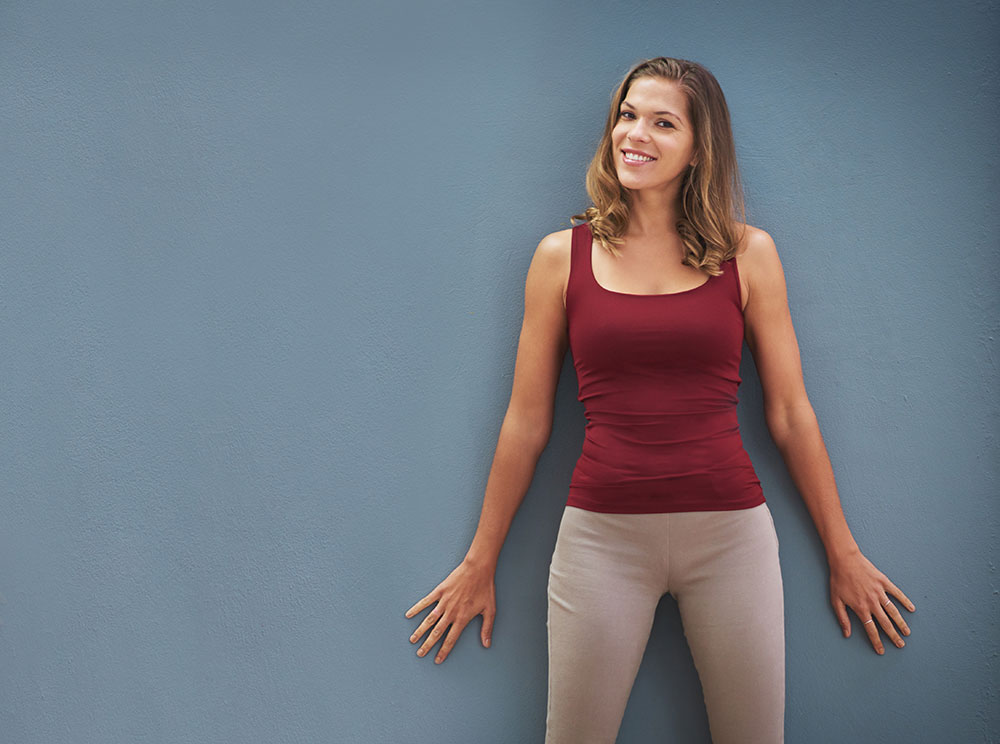
The benefits of standing tall extend beyond just how we feel internally—they also affect the way we are perceived by others. People tend to associate good posture with competence, reliability, and confidence. Whether at work, social events, or in professional settings, standing upright can influence how others respond to us, often leading to more respect and trust. When we carry ourselves well, it creates a positive feedback loop: as we feel more confident, others take notice and treat us with greater respect, which further reinforces our self-esteem. Thus, the act of standing tall becomes not just a physical adjustment, but a key element in cultivating lasting confidence.
Elegant Walking as a Mindset– Developing self-awareness and poise
Elegant walking is more than just a physical skill; it’s a mindset rooted in self-awareness and poise. To walk with grace, one must first cultivate an awareness of their body and how it moves through space. This self-awareness allows you to make conscious adjustments to your posture, stride, and movements, ensuring that each step reflects calm, control, and confidence. When we embrace this mindset, walking becomes less about trying to perfect each movement and more about embodying a sense of inner tranquility and elegance. As we walk with intention and awareness, we exude poise, which is not only about how we move but also how we carry ourselves in everyday life.
Developing poise through walking is a continuous practice of alignment and presence. It involves tuning into your body and being mindful of how your feet connect with the ground, how your torso remains aligned, and how your arms swing rhythmically. The key is to integrate the principles of good posture into the act of walking, so they become second nature. By focusing on fluidity and ease in each step, we allow our bodies to move naturally and gracefully. As this mindset becomes ingrained, walking elegantly is no longer a conscious effort but a natural extension of our personal poise.

This approach to walking reflects a broader sense of self-awareness that can positively impact other aspects of our lives. When we walk with elegance, we are also communicating self-respect and confidence. It becomes a reflection of how we see ourselves and how we wish to engage with the world around us. The elegance of our walk serves as a visual expression of our internal state of balance and composure. By consistently practicing self-awareness and poise while walking, we not only improve our physical movement but also develop a deeper sense of confidence that resonates in all areas of life.
Body Language and Social Impact– How posture influences interactions
Body language plays a crucial role in how we interact with others, and our posture is one of the most powerful tools for influencing social dynamics. The way we hold ourselves can significantly impact how others perceive us and how we engage in conversations. Good posture, such as standing tall with shoulders back and chin lifted, conveys openness, approachability, and confidence. This nonverbal communication signals to others that we are engaged and interested in the interaction, making them more likely to respond positively. On the other hand, slouching or adopting closed body language can create a barrier, signaling discomfort, disinterest, or even insecurity, which may cause others to feel less connected or engaged with us.
Our posture can also affect the flow and tone of social interactions. For example, when we maintain good posture while speaking, it enhances our ability to project our voice, making it clearer and more confident. This can result in stronger, more effective communication, where our words are better received and understood. In contrast, poor posture can make our voice sound weaker or more timid, and our message may not come across as confidently. By paying attention to our body language and adjusting our posture accordingly, we can positively influence how others respond to us, fostering more meaningful and productive conversations.
Moreover, body language is often subconscious, meaning people often form judgments based on our posture without even realizing it. For example, standing or sitting in a relaxed yet open position can make us appear more approachable, trustworthy, and competent. On the other hand, slouched shoulders or crossed arms can create the impression of defensiveness or disinterest, even if that is not the intention. Understanding the impact of our posture on social interactions allows us to take control of how we are perceived and engage more confidently in various situations, from networking events to casual conversations. In essence, our posture directly shapes the energy we bring to any interaction, influencing the way we connect and communicate with others.

Overcoming Self-Consciousness– Building confidence in public spaces
Overcoming self-consciousness is a significant step in building confidence, especially in public spaces where we may feel more vulnerable or judged. One of the key ways to combat self-consciousness is by focusing on our posture. When we stand tall with shoulders back and head held high, we not only project confidence but also begin to feel more assured internally. It’s amazing how much the simple act of aligning our body can affect how we feel. As we adopt this confident posture, our mindset shifts, and we are less likely to focus on perceived flaws or worry about how others are viewing us. This shift can make a huge difference in how comfortable we feel in social situations.
Additionally, practicing good posture in public spaces can help redirect our attention away from self-doubt and towards the present moment. When we focus on maintaining an open, confident stance; whether we’re standing, walking, or sitting, it reduces the tendency to overthink how we are being perceived. By consciously aligning our body, we create a sense of control and presence that helps manage feelings of anxiety. Over time, this practice helps build a natural sense of poise that doesn’t feel forced or unnatural, gradually replacing self-consciousness with a calm, confident demeanor.
Another important aspect of overcoming self-consciousness is realizing that most people are too focused on their own thoughts and experiences to be critically evaluating us. When we hold ourselves confidently and stand tall, we begin to internalize the truth that we are worthy of attention and respect. The more we practice good posture, the less self-conscious we become, and the more we feel comfortable in our own skin. By allowing our body language to align with the confidence we want to project, we are reinforcing positive self-perception, making it easier to navigate public spaces with grace and self-assurance. Over time, this will naturally reflect in how others perceive us, further boosting our confidence and comfort in any social environment.

11- The Role of Clothing and Footwear in Elegant Walking
Section 11 explores the often-overlooked yet essential role that clothing and footwear play in enhancing our posture and walking elegance. The right choice of shoes and attire can significantly impact how we carry ourselves, as they can either support or hinder our natural alignment and movement. In this section, we’ll look at how selecting comfortable and supportive footwear, as well as clothing that fits well and allows freedom of movement, can make a huge difference in maintaining good posture. We’ll also touch on how to wear heels elegantly without compromising comfort and how tailoring outfits to your body can promote poise and confidence. By understanding the connection between what we wear and how we walk, we can make more informed choices that not only enhance our style but also our physical well-being and grace.
Choosing Comfortable and Supportive Shoes– Avoiding posture issues from improper footwear
Choosing comfortable and supportive shoes is essential not only for overall comfort but also for maintaining proper posture. Many people underestimate the impact that shoes can have on their body alignment. Wearing shoes that lack proper arch support, cushioning, or the right fit can lead to a variety of posture issues, such as imbalances in the spine, tension in the lower back, and even pain in the hips and knees. The wrong footwear can cause misalignment, making it more difficult to maintain a neutral spine and resulting in discomfort over time. For example, shoes that are too flat or lack arch support can strain the muscles in your feet, affecting your walking posture and leading to muscle fatigue.
To avoid these posture problems, it’s important to select shoes that provide adequate support for your foot’s natural arch. Look for shoes that have a slight heel, which helps to distribute weight evenly across the foot and prevents excessive pressure on any one area. Supportive shoes with cushioned insoles can also help absorb shock and minimize the impact on your joints, which in turn benefits your overall posture and alignment. If you find yourself standing or walking for extended periods, choose shoes that allow your feet to breathe and move freely, without squeezing or restricting the toes. Properly fitted shoes prevent strain and help you walk with a more natural, balanced gait.
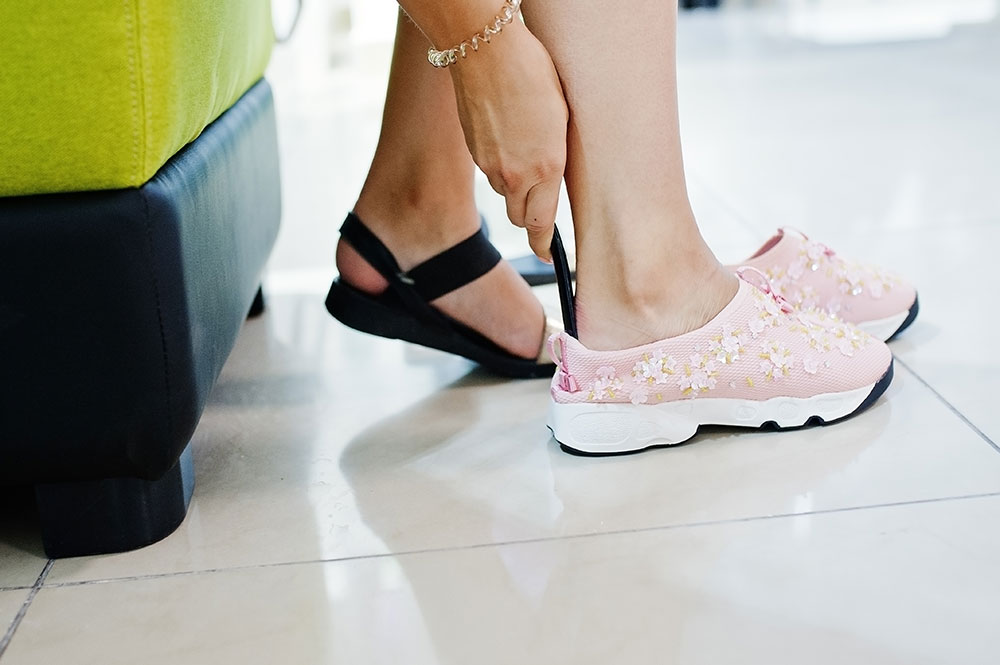
Another important factor to consider is the fit of the shoe. Shoes that are too tight or too loose can lead to poor posture, as they force the body to compensate for discomfort. Tight shoes may cause you to shift your weight unnaturally, leading to misalignment in the hips and lower back. Conversely, shoes that are too loose can cause you to overcompensate by adjusting your stride, which can result in walking with a slouched posture. Ensuring that shoes are both comfortable and properly fitted can prevent these issues, allowing you to maintain an elegant and aligned posture throughout the day. By prioritizing comfort and support, you can significantly improve your walking experience while also enhancing your posture and overall well-being.
Clothing That Enhances Posture– The impact of fit and fabric on movement
The clothing you wear plays a significant role in how you carry yourself and can directly impact your posture. The fit of your clothes, in particular, can either enhance or hinder your body’s natural alignment. Wearing clothes that are too tight or too loose can restrict your movement and cause discomfort, leading to poor posture. Tight clothing can compress the body, making it harder to stand or sit upright, while overly loose clothing may cause you to slouch or hunch forward in an attempt to maintain balance. To maintain a confident and elegant posture, it’s important to choose garments that fit properly neither too snug nor too baggy. Clothes that allow for free movement and are tailored to your shape will enable you to maintain a more natural, upright stance, enhancing your overall presence.
The fabric of your clothing also plays a key role in supporting good posture. Materials that are stiff or heavy can restrict your range of motion, forcing you to adjust your posture in order to compensate for the lack of flexibility. On the other hand, fabrics that are soft and stretchy like cotton blends, linen, or lightweight wool; allow your body to move with ease, supporting an open, upright posture. These types of fabrics offer comfort and breathability, making it easier to stay aligned without feeling restricted. Clothes made from such fabrics also help maintain a smooth, natural flow of movement as you walk, contributing to a graceful, elegant stride. In contrast, fabrics that are too rigid can create tension in your body, which often results in slouching or awkward movements.
When selecting clothing, it’s also important to consider how the garment shapes your body. For instance, wearing clothes that accentuate the natural curves of your body, such as well-tailored dresses or fitted blazers, can improve posture by encouraging you to stand and sit in a more confident, upright position. Structured garments like these provide gentle support to the body and help promote good posture habits throughout the day. In contrast, clothing that lacks structure may allow you to slump or slouch without realizing it. Ultimately, the right clothing choices, from fit to fabric, help you maintain an aligned and confident posture, ensuring that you move gracefully and comfortably, whether you’re at work, socializing, or simply going about your day.
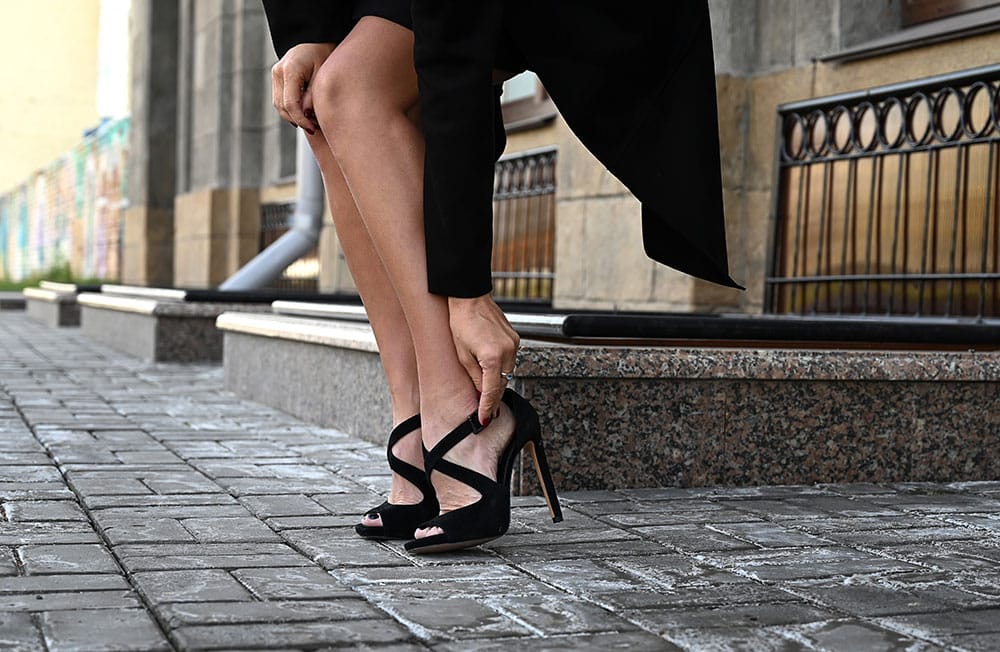
Wearing Heels Elegantly– Balancing style and comfort
Wearing heels elegantly is often seen as a marker of sophistication and confidence, but it requires a balance between style and comfort. The first step in achieving this balance is selecting the right pair of heels. Not all high heels are created equal, and choosing a pair with a comfortable fit is essential. Shoes that are too tight or have poorly designed arches can cause discomfort, leading to an unnatural gait and potentially damaging your posture. To maintain both elegance and comfort, opt for heels with a reasonable height, wide toe boxes, and cushioned insoles. A lower heel or one with a thicker base will provide more stability and prevent strain on the feet and ankles, allowing you to walk gracefully without compromising comfort.
When wearing heels, it’s also important to pay attention to how your body reacts to the extra height. Heels alter your natural alignment, pushing your weight forward and causing your posture to adjust accordingly. To maintain an elegant stance, engage your core and keep your spine aligned. Focus on standing tall with your shoulders back and your chest lifted, as this will help balance your body and prevent slouching. When walking in heels, take smaller, controlled steps rather than long strides, as this reduces the risk of wobbling or tripping. Pay close attention to how you move, keeping your steps fluid and your feet landing softly, rather than stomping. These conscious movements will help you walk with more confidence and poise, ensuring that your heel-wearing experience remains elegant.
Lastly, remember that the right pair of heels can complement your overall posture and contribute to your elegance. When you wear heels that fit properly and allow for smooth, balanced movement, they can accentuate your natural silhouette, making you appear taller and more poised. However, when heels are uncomfortable or ill-fitting, they can cause discomfort and affect your gait, which in turn can negatively impact your posture. By carefully selecting shoes that provide both style and comfort, and by focusing on proper alignment and movement, you’ll be able to wear heels with grace and ease. This balance not only enhances your overall look but also supports your well-being, allowing you to enjoy the beauty of elegant footwear without compromising your comfort.
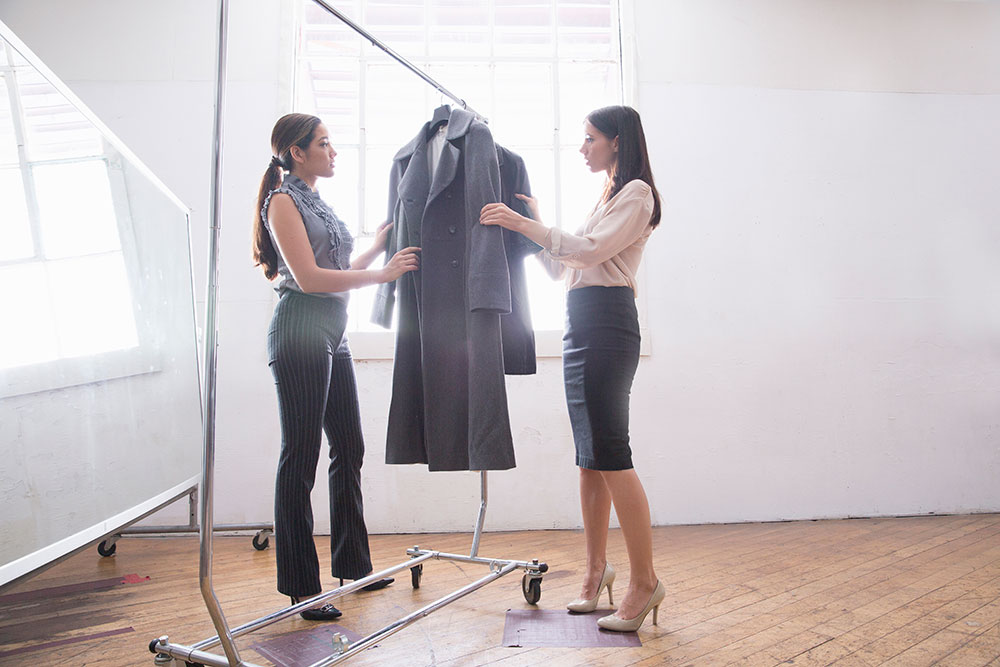
Tailoring Outfits for Poise– Selecting outfits that allow free movement
When it comes to dressing for poise and elegance, the key is selecting outfits that allow for free movement while still maintaining a structured, sophisticated look. Clothing that fits well and supports your body’s natural movements enhances your posture and overall confidence. It’s important to choose fabrics that offer some stretch and flexibility, as these materials will move with you, rather than restricting your motions. For example, fabrics like cotton, wool blends, or fabrics with a bit of elastane provide comfort and ease, allowing you to maintain proper posture without feeling stiff or confined. When clothes are too tight or too loose, they can hinder your ability to move gracefully and comfortably, which impacts your overall presence.
Beyond the fabric, the cut and fit of your clothing also play an important role in supporting your posture. Outfits that are tailored to your body shape will create cleaner lines and a more flattering silhouette, helping you stand taller and move more fluidly. For example, a fitted jacket or blazer that cinches at the waist can provide structure while giving you the freedom to breathe and move naturally. Similarly, pants or skirts with an appropriate length and cut ensure that you aren’t tripping or tugging at your clothes, which would disrupt your movement and posture. Aim for clothing that flatters your shape without being overly tight, as it will allow you to carry yourself with more ease and grace.
Additionally, the way an outfit flows is just as important as its fit. Long dresses or skirts, for instance, should be styled in a way that doesn’t restrict your steps or make walking cumbersome. If you’re wearing something more voluminous, such as a gown, ensure that the hemline allows you to move fluidly without getting caught underfoot. Tailored outfits that give you the freedom to bend, stretch, and walk without restriction will not only enhance your posture but will also empower you to carry yourself with elegance. When you choose clothes that work in harmony with your movements, they serve as an extension of your body, contributing to a more polished and poised appearance.
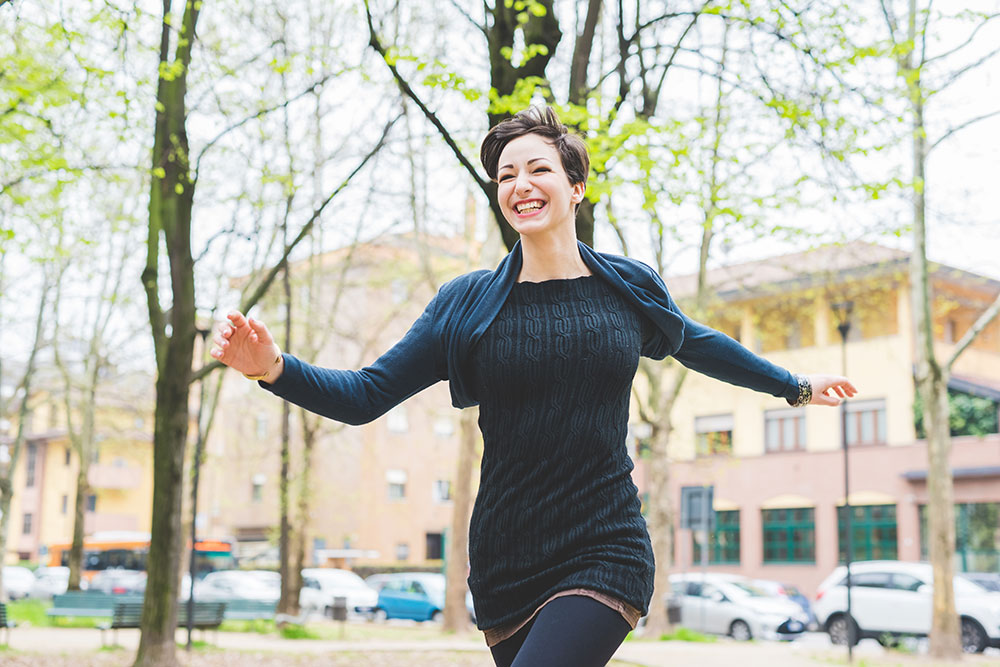
12- Training for Long-Term Postural and Walking Improvement
This section focuses on the importance of training and practice to achieve long-term improvements in posture and walking technique. While developing good posture and elegant walking is essential for overall confidence and presence, it takes consistent effort and awareness to maintain and enhance these skills over time. In this section, we will explore various methods and tools that can help you refine your posture and walking abilities. From practicing in front of a mirror to reviewing video recordings of yourself, we will discuss how visual feedback can be a powerful tool for self-improvement. Additionally, professional training with experts in posture, movement, and etiquette can provide valuable guidance for those looking to master their posture and walking technique. Finally, setting personal goals and tracking your progress is essential for maintaining motivation and achieving long-lasting results. By integrating these strategies into your daily routine, you can build strong habits that support a graceful, confident, and elegant presence.
Mirror Practice– Observing and correcting posture and walking technique
Mirror practice is one of the most effective methods for improving posture and walking technique, as it provides immediate visual feedback. By standing in front of a full-length mirror, you can observe your posture from different angles, making it easier to identify areas that need adjustment. For posture, focus on maintaining a neutral spine, aligned shoulders, and evenly distributed weight. As you walk, watch your stride and arm movement, ensuring you move with fluidity and without stiffness. The key benefit of mirror practice is the ability to see yourself in real-time, allowing you to make corrections and fine-tune your posture and walking style as you go.
In addition to seeing your posture and movement, mirror practice helps you develop an awareness of your body’s alignment and the way it responds to subtle changes. It encourages a mindful approach, enabling you to catch common mistakes like slouching, misalignment, or tensing up. This awareness is crucial for creating muscle memory, as repeated corrections in front of the mirror help train your body to adopt the correct posture naturally. By practicing regularly, you begin to internalize the proper positioning and walking habits, making them feel more effortless and automatic over time.
To get the most out of mirror practice, it’s important to be patient and deliberate. Start by observing your posture in static positions and then gradually progress to walking. Break down each element of your posture and stride, paying close attention to how your body moves and how you can improve it. After each practice session, take a moment to assess your progress and set goals for the next session. With consistent effort, mirror practice can significantly enhance your body awareness and help you develop a graceful, confident walking style.

Video Feedback– Reviewing recordings to identify areas of improvement
Video feedback is a powerful tool for enhancing posture and walking techniques. By recording yourself, you can gain an objective perspective on your body’s alignment and movement patterns, which may be difficult to notice in real-time. Watching a video allows you to slow down the footage, analyze your posture from various angles, and spot any mistakes or inefficiencies in your walking style. For example, you might notice if your shoulders are uneven, if your stride is too short or too long, or if your posture becomes misaligned as you move. This level of analysis helps you identify key areas that need attention, enabling you to make targeted adjustments.
One of the main benefits of using video feedback is the ability to compare different practice sessions over time. By recording yourself regularly, you can track your progress and see how your posture and walking technique evolve. This visual documentation serves as a great motivator, allowing you to notice improvements that might not be as obvious during daily practice. You can even use video to compare your movements against professional examples, such as a runway model or dancer, to see where you can refine your technique further. Seeing your growth over time can help build confidence and reinforce the importance of maintaining good posture.
To make the most of video feedback, ensure that the recordings are taken from multiple angles; side, front, and back so you can observe your posture and movements in a comprehensive way. After reviewing the footage, take notes on specific adjustments that need to be made. It’s helpful to focus on one or two aspects of your posture or walking technique at a time so that you don’t overwhelm yourself with too many changes. By incorporating video feedback into your regular training routine, you’ll gain valuable insights into your posture, which will help you make steady improvements toward walking and standing with elegance.
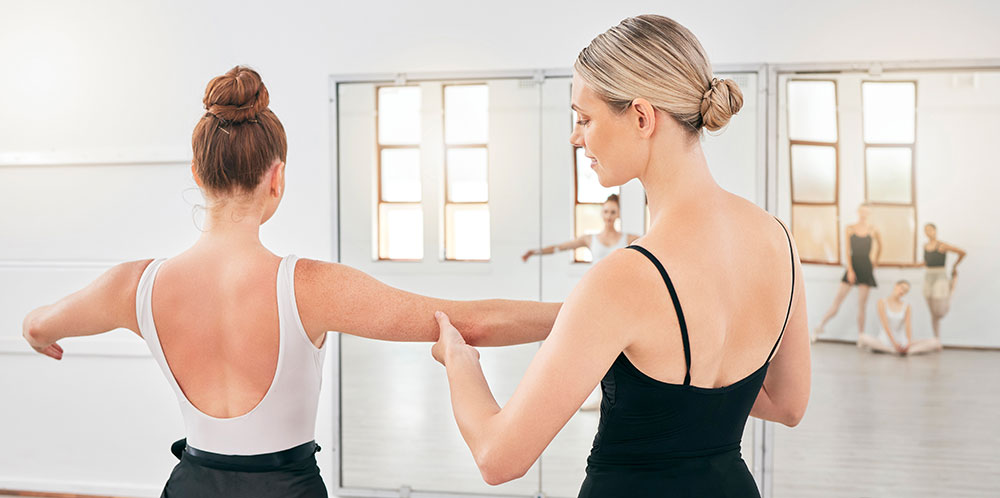
Professional Training– Working with posture coaches, ballet, or etiquette instructors
Working with professionals such as posture coaches, ballet instructors, or etiquette coaches can significantly accelerate your progress in improving your posture and walking technique. These experts bring years of experience and specialized knowledge, offering you tailored guidance that’s difficult to replicate on your own. A posture coach, for example, can help identify any misalignments or imbalances in your body’s structure and provide personalized exercises to strengthen weak areas while promoting better alignment. They can give immediate feedback on your posture and walking habits, allowing you to make adjustments in real-time, ensuring that you adopt the correct form right from the start.
Ballet and dance instructors also play an essential role in improving posture, as their training emphasizes fluid movements, core strength, and body awareness; key components for walking with grace and elegance. Ballet techniques focus on maintaining a neutral spine, engaging the core, and executing precise movements, which directly translate to better posture in everyday life. By incorporating ballet movements into your routine, you’ll build muscle memory and develop a stronger sense of body control. Ballet can also help you refine the small details of your walk, such as how to place your feet, where to focus your gaze, and how to move your arms in harmony with your body.
Etiquette instructors specialize in teaching posture and movement as part of overall etiquette training, helping you develop a poised and confident presence in various social and professional settings. They can guide you through the nuances of how to stand, walk, and sit in a way that conveys elegance and respect. With their expert insights, you can learn how to adapt your posture to different environments; whether it’s a formal event, a business meeting, or a casual gathering, while maintaining grace and composure. Working with a professional not only fine-tunes your physical posture but also helps boost your self-awareness, ultimately allowing you to carry yourself with poise and confidence in any situation.
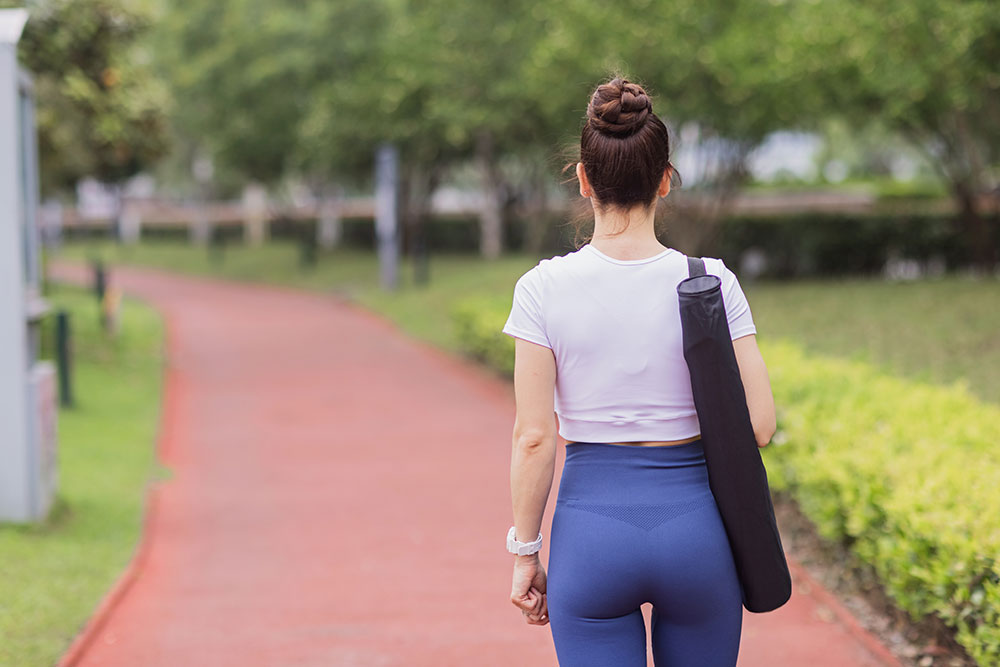
Posture and Walking Challenges– Setting personal goals and tracking progress
Setting personal goals and tracking progress are crucial steps in maintaining motivation and making consistent improvements in your posture and walking technique. Just like any other skill, enhancing posture and movement requires patience, practice, and measurable milestones to ensure you’re on the right track. Start by identifying specific areas where you want to improve, whether it’s eliminating slouching, walking with more fluidity, or simply standing taller. By setting clear, achievable goals, such as “I will walk with my shoulders relaxed for 15 minutes each day,” you create a roadmap for your progress. These small, incremental goals will help you stay focused and motivated as you work towards better posture and a more elegant way of moving.
Tracking your progress regularly is just as important as setting goals. Keeping a journal or using a digital app to record your achievements allows you to see how far you’ve come over time. For example, note the improvements in your posture when standing or walking, how long you can maintain a neutral spine, or how your core feels when engaged during movement. You could even record short videos of yourself walking or standing, which can be useful for comparing your technique over weeks or months. Having a visual reference lets you recognize patterns and pinpoint areas that need further attention, making adjustments easier to make.
Additionally, you can integrate feedback from professionals or peers to help refine your technique. Whether it’s a posture coach, a friend, or even a family member, having someone else observe your posture and walking can provide valuable insights. For example, a posture coach may notice subtle shifts or postural habits that you might miss on your own. Tracking progress in a comprehensive way through a combination of personal observation, professional feedback, and goal-setting will ensure you’re making meaningful strides toward long-term improvement. With time, these habits will become second nature, and you’ll notice your posture and walking technique naturally improving, both in daily life and special occasions.

13- Common Mistakes and How to Avoid Them
Even with the best intentions, it’s easy to fall into habits that compromise both posture and elegance in movement. After building awareness, practicing techniques, and even setting personal goals, the final piece of the puzzle is knowing what to avoid. Common mistakes like walking too fast, slouching, or moving too stiffly can undermine your efforts and leave you feeling awkward or uncomfortable rather than poised and graceful. This section focuses on identifying these missteps and understanding the subtle ways they show up in daily life, so you can consciously correct them.
We’ll explore how to maintain a steady, composed walking pace without slouching, how to prevent stiffness by staying fluid in your movements, and why overcorrecting posture can do more harm than good. Additionally, we’ll talk about the importance of listening to your body because ignoring signs of discomfort can lead to lasting issues that hinder progress. By recognizing these pitfalls and learning practical ways to avoid them, you’ll be able to refine your posture and walk with genuine elegance and ease, no matter where you are or what you’re wearing.
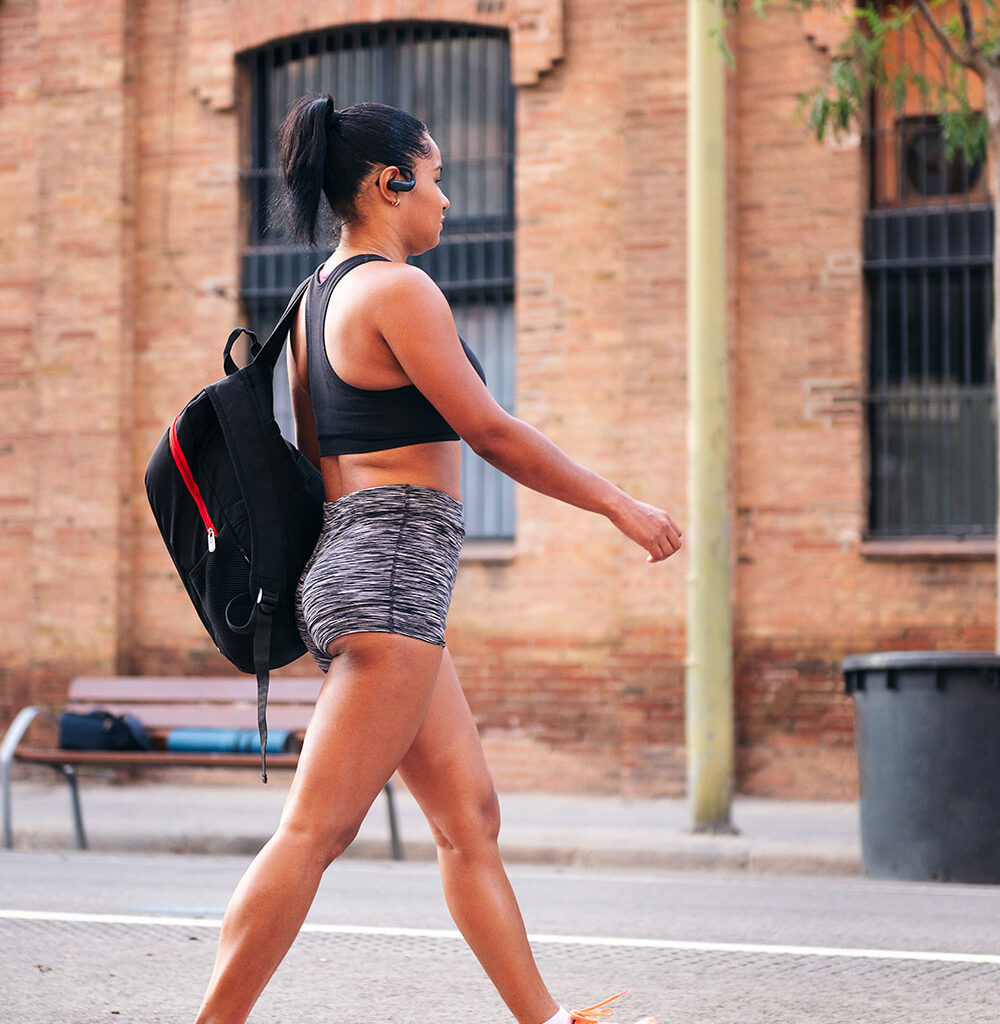
Walking Too Fast or Slouching– Tips to stay upright and composed
One of the most common mistakes people make when walking is moving too quickly, which often leads to slouching or losing control of their posture. In the rush of daily life, it’s easy to fall into a hurried pace without realizing how much it affects your alignment. Walking too fast tends to throw the body forward, causing the shoulders to round and the neck to crane; classic signs of poor posture. Slouching not only diminishes your physical presence but also impacts how confident and composed you appear. To combat this, it’s essential to practice mindfulness in movement. Consciously slow your pace, allow your heel to strike first, and let your body naturally roll through each step. This not only promotes elegance but gives your posture a chance to remain upright and relaxed.
To stay composed while walking, think of your head as being gently pulled upward by a string, encouraging an elongated spine. Keep your shoulders back but relaxed, and engage your core muscles slightly for support. By walking with intention, you’re less likely to fall into the trap of slouching or rushing. Developing this awareness can take time, but small reminders like checking in with your posture at red lights, store windows, or elevator doors can make a big difference. The goal is not to be rigid, but rather to move with calm control. When you walk at a comfortable pace, your body has the space to align itself properly, making you appear more grounded and self-assured.
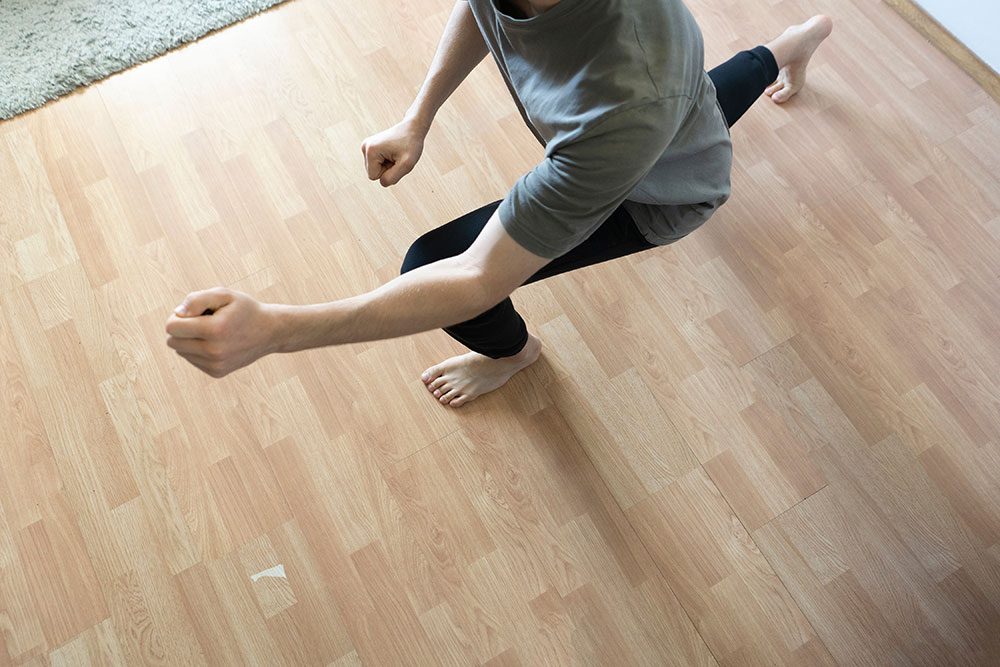
Stiff Movements- Encouraging fluidity and relaxation in motion
While good posture requires a certain level of control and awareness, it’s easy to take that too far and become overly stiff in your movements. Many people, in an effort to stand tall or walk “correctly,” end up locking their joints, tightening their muscles, and moving in a robotic or tense way. This stiffness can interrupt the natural rhythm of your walk and make you appear uncomfortable or unapproachable. It also leads to fatigue more quickly, as your muscles are constantly working against tension instead of moving efficiently. The key to elegance isn’t in rigidity but it’s in the ability to move smoothly and with ease.
Encouraging fluidity starts with relaxation. Loosen your shoulders, let your arms swing gently at your sides, and avoid clenching your hands or jaw. Your movements should feel like they’re flowing rather than being forced. Think of walking as a coordinated effort between your posture and your energy; graceful, intentional, but never tense. If you feel stiffness creeping in, take a few deep breaths and shake out your limbs to reset. Practicing activities like yoga, tai chi, or even slow dancing can help you connect with your body’s natural movement patterns. Over time, you’ll find that your posture becomes a foundation for elegance, not a constraint.

Overcorrecting Posture- Avoiding unnatural stiffness or discomfort
Striving for perfect posture is admirable, but there’s a fine line between healthy alignment and overcorrecting your stance to the point of discomfort. Many people, when learning about posture, tend to overcompensate by excessively straightening their back, pulling their shoulders too far back, or tightening their muscles in an unnatural way. While this may give the illusion of proper posture, it actually causes strain, limits mobility, and can even create new tension in the neck, back, or hips. The goal of good posture isn’t to feel like you’re bracing yourself but it’s to feel balanced, supported, and at ease.
True elegance in posture comes from subtlety and awareness, not extremes. If you’re constantly feeling sore or restricted when trying to stand tall, it may be a sign that you’re pushing your body too far out of its natural alignment. Instead, aim for gentle corrections: think of stacking your head over your spine, relaxing your shoulders into a neutral position, and allowing a soft curve in your lower back; not forcing it flat. Using tools like mirrors or posture guides can help you recognize when you’re going too far. Remember, posture should feel sustainable and natural, not like a performance. Let your body settle into alignment rather than locking it into place.

Ignoring Discomfort Signals- Recognizing when improper posture causes pain
One of the most common mistakes people make in their posture journey is brushing off discomfort as a normal part of the process. While it’s true that adjusting your posture can feel unfamiliar at first, persistent aches or sharp pain are your body’s way of telling you something isn’t right. Whether it’s a dull ache in your lower back, stiffness in your neck, or a burning sensation between your shoulder blades, these signs shouldn’t be ignored. They often point to poor alignment, prolonged tension, or even overuse of certain muscles compensating for others.
Learning to listen to your body is essential for long-term improvement. Pain isn’t a badge of progress; it’s a warning. If you find yourself constantly shifting in your seat, needing to crack your neck or stretch your lower back, it might be time to reevaluate your posture habits. Are you leaning too far forward at your desk? Are your shoulders tensed and lifted? Simple changes like adjusting your chair height, taking frequent breaks, or incorporating gentle stretching can help ease the strain. Most importantly, be patient with yourself. Developing graceful, pain-free posture is a process of learning, adjusting, and tuning in; not pushing through discomfort and hoping it goes away.
Continue Reading
- How to have a good posture and walk elegantly / Part 1
- How to have a good posture and walk elegantly / Part 2
- How to have a good posture and walk elegantly / Part 3
- How to have a good posture and walk elegantly / Part 4
- How to have a good posture and walk elegantly / Part 5
Written By: Muskaan Khojestagan



Add a Comment